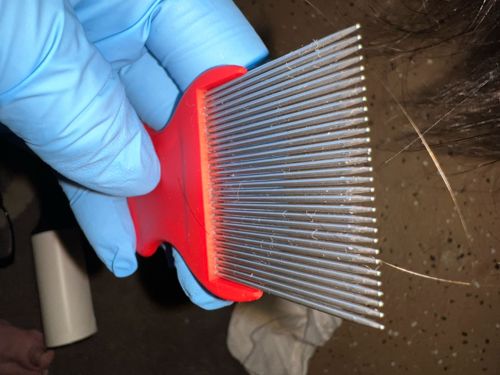Head Louse
Scientific Name: Pediculus humanus capitis
Order & Family: Phthiraptera, Pediculidae
Size: 2-4 mm (adult)

Natural Habitat
Human hair, particularly behind the ears and near the nape of the neck.
Diet & Feeding
Human blood (they are obligate blood feeders).
Behavior Patterns
Head lice spend their entire lives on the human scalp, feeding multiple times a day. They cannot fly or jump, and typically spread through direct head-to-head contact or, less commonly, through shared items like combs, hats, or hair accessories. Females lay eggs (nits) firmly attached to hair shafts.
Risks & Benefits
Risks: Head lice infestations (pediculosis capitis) can cause intense itching, scalp irritation, and secondary bacterial infections due to scratching. They do not transmit diseases. Benefits: There are no known benefits of head lice to humans or ecosystems; they are solely parasites.
Identified on: 10/18/2025